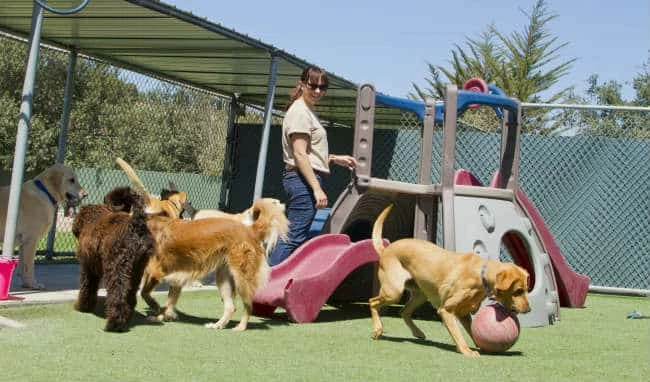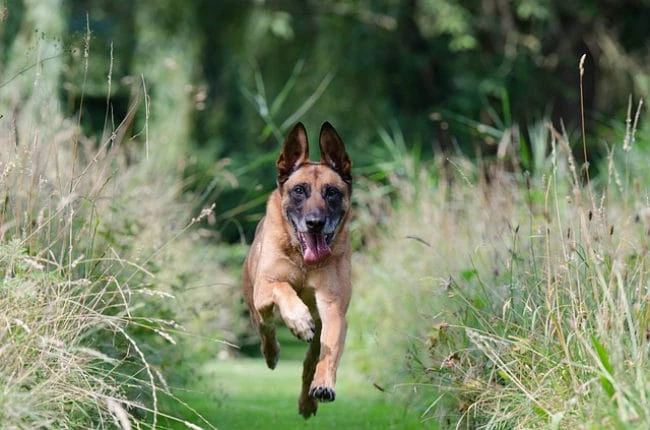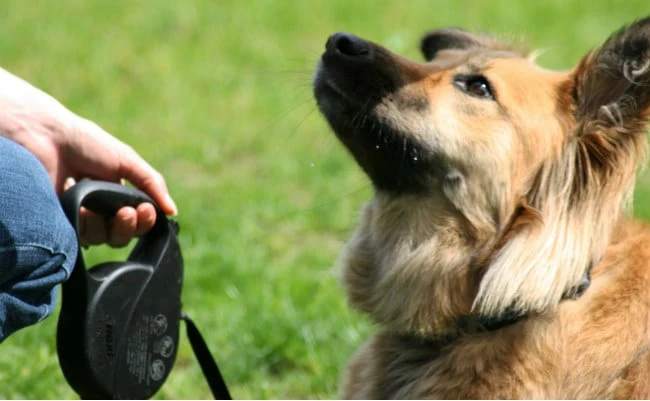Will Boarding My Dog at a Kennel Stress Him Out?

Boarding kennels are a bit like daycare, and your dog is kind of like a kid – in fact, if you’re like most dog owners, you probably consider Fido to be one of your babies. Sometimes, boarding your dog is absolutely necessary, just like sometimes putting a child in daycare is the only option.
Some dogs love going to the kennel, just like some kids love going to daycare. Other dogs, not so much. Whether staying at a boarding kennel is going to stress out your dog depends entirely on her personality, any deep fears she has, and her level of socialization.
My son was recently taking his California online drivers ed course and realized if he ever wants to take a vacation or road trip while we are gone, we’d have to figure out how to board our dog. This made him nervous and he wanted to do some more research.
What Does a Stressed Dog Look Like?
Dogs can get stressed out about almost anything. Some dogs become deeply stressed out by thunder, fireworks, and cars backfiring, while others may become stressed when strangers come into the home or when another dog is nearby. Just like people, dogs have different stress triggers.
Your dog will let you know when he’s stressed, but whether you pick up on his cues is a matter of knowing what a stressed dog looks like. Dogs under stress may repeatedly lick their lips and nose, but not the kind of happy-go-lucky licking that means a treat is imminent. More like obsessive, worried licking. Frequent and intense yawning is another stress indicator, and so is heavy panting for no apparent reason. Your dog may pin his hears against his head when he’s feeling stress, and his tail may ride lower than normal. He may whine excessively, lean backwards as though trying to resist moving forward, and he may show avoidant behaviors like inattention or looking away.
To Board, or Not to Board?
If you’re going on a trip or having your home remodeled, you may be considering putting your dog in a kennel while you’re gone or while workmen are traipsing in and out of your home. And that’s a good call, because in general, going on a trip or having work done in the house – complete with people in uniforms stomping around in heavy boots making all manner of hammering and sawing noises – can stress out your dog more than spending a few days relaxing and playing in a boarding facility.
Boarding your dog as opposed to having a friend or family member stay at your place while you’re gone or keeping her in a crate while workers are present can have distinct benefits. First, Fefe gets to avoid the stress of construction or traveling. She’ll receive much more loving attention at the kennel than she would at home alone or in her crate. She’ll also be well supervised, unlike the dog who’s left at home to be checked in on a couple of times a day. Boarding your dog offers you peace of mind that she’s safe and in good hands, and not getting bored and shredding the quilt your grandma made for you before she passed into to the Light.
But there are some down sides to boarding your dog. For one thing, the cost can be prohibitive, depending on how long you need to board him. For another, he’ll be in close proximity to other dogs for a few days, and if you have kids in daycare, you already know that they tend to catch every little bug going around, and dogs are no different. You may be picking up a sniffling, sneezing dog when you come back to town. Or maybe not.
By and large, however, the benefits of boarding your dog far outweigh the detriments. And the fact is, it’s much more likely that you’re going to be the one who’s stressed out, worrying about your dog and whether he’s missing you and thinking you abandoned him. Meanwhile, Kipper is having the time of his life, going on nature walks, taking dips in the pool, playing with other furry friends and/or getting all sorts of love and attention from kennel staff.
Selecting a Boarding Facility
Boarding kennels are dog motels. And like people motels, dog motels can be like seedy highway joints where you sleep fully clothed on top of the covers and have no desire to put your bare feet anywhere near the bathroom, or they can be like a Four Seasons resort, complete with wallpapered kennels and a doggie spa that offers canine massage, a warm doggie pool, and several acres of woodlands for romping around with new friends.
And that’s why you’ve got to do your due diligence and select a kennel that’s more Four Seasons and less Bates Motel.
Kennels that are certified by the Pet Services Care Association (PSCA) have signed a commitment to quality, safety, cleanliness, professionalism, and responsibility for the wellbeing of the animals in their care. Ask your vet to recommend a PSCA-certified kennel, or ask friends who board their own pets for some suggestions.
Visit a few kennels and poke around. A good kennel will be clean and orderly. It won’t smell like a building that’s full of animals. It won’t be too hot or too cold, and there won’t be piles of poo in the outdoor bathroom or romping area. The place will look and feel secure, and the kennel staff will be warm and caring. It will be obvious that they love animals.
Talk to the kennel owner and ask how much exercise and playtime dogs get, ask about the feeding schedule, and find out how veterinary care is given in the event it’s needed. Ask whether you can bring Jezebel’s toys, bedding, and/or food. Find out whether they can accommodate any special care she requires. You can also talk about stress and how they handle pups that are having trouble adjusting.
Before Boarding
If the kennel you choose offers doggie daycare, consider taking Porkchop once or twice before boarding time to familiarize him with the place and to put your mind – and his – at ease.
Quality kennels will require that all of their canine guests are up to date on their vaccinations, including Bordetella, or kennel cough. They’ll insist that your dog be free of parasites and that she hasn’t been exposed to contagious diseases in the few days prior to boarding.
The more socialized your dog is, the better off she’ll be at the kennel. It’s also a bonus of she knows basic commands like “sit,” “stay,” and “come.”
The Big Day
On the day you take Bubbles to the kennel, avoid feeding her during the four hours prior to arrival to ensure her tummy doesn’t get upset if she does get a little stressed. If it’s allowed, bring along a couple of her favorite toys, her bed or blanket, and something that has your scent on it.
Write down any special instructions about medications or feeding issues, and note any fears or behaviors that the staff should be aware of.
When it’s time to say goodbye, make it short and sweet. Don’t linger. Stay calm and upbeat so that Spike doesn’t pick up any stressful or overly emotional energy from you. Give him a happy kiss and a hug, and then walk away. Walk away, walk away, walk away. Your dog will be in good hands, and since dogs don’t have a sense of time, when you come back, it’ll be as though you were never gone.




